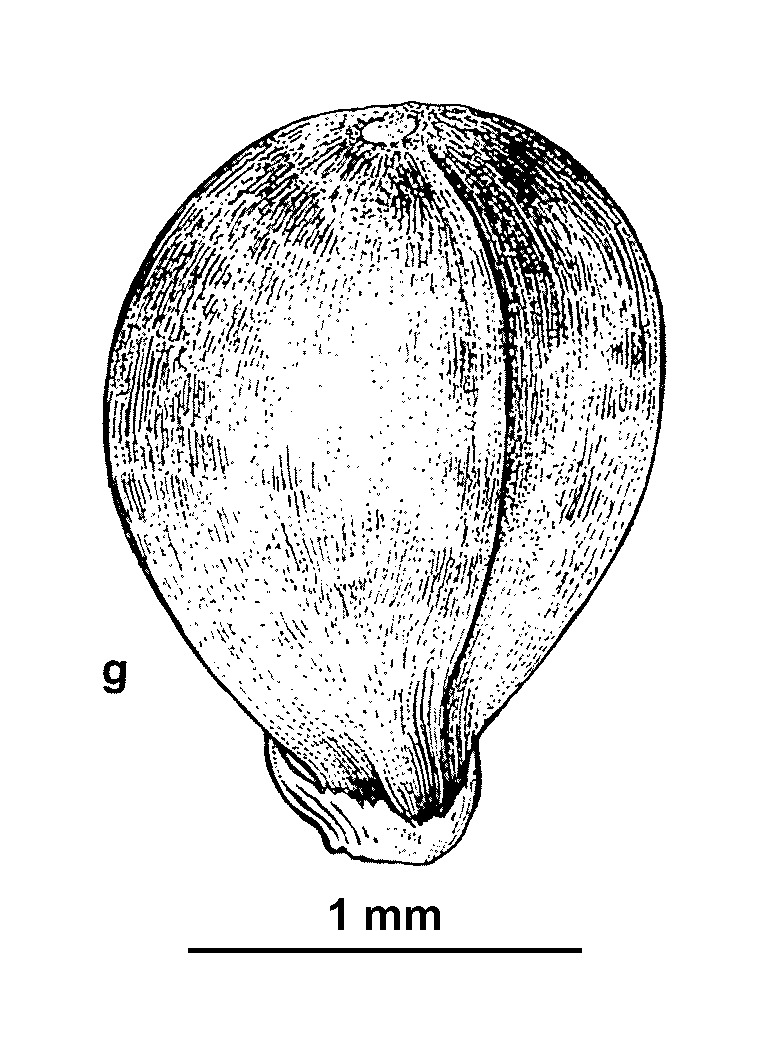Schoenus laevigatus
W.Fitzg.Perennial with short stout rhizome. Culms erect, rigid, terete, nodeless or 1-noded, 15–40 cm high, c. 1 mm diam. Leaves with blade to 3 cm long; sheath red-brown (occasionally yellow-brown), ± smooth, glistening to shining; mouth glabrous with margins overlapping; ligule present. Inflorescence narrow, erect, 5–19 cm long, with spikelets clustered at 2–5 nodes; lowest involucral bract to 2 cm long. Spikelets narrow-ovate, acute, 3–4-flowered, 7–10 mm long; glumes 5–6, lowest 2 empty, acute, mucronate, red-brown to dark grey-brown, dull or glistening, with margins woolly (at least near apex); fertile glumes 5–7 mm long; hypogynous bristles 2–6, not plumose, much shorter than nut. Nut trigonous, obovoid to ellipsoid, 3-ribbed, papillose, dull or glistening, red-brown, 1.5–1.8 mm long, c. 1.0 mm diam. Flowers spring–summer.
LoM, Wim, GleP, OtP, Gold, GGr, DunT. Also WA, SA. Found in south-western Victoria, as far east as Anglesea and north to the Little Desert. In heaths or low woodlands, on sandy soils.
In general appearance and habitat preference extremely close to the principally eastern S. brevifolius and previously confused with it.
Wilson, K.L. (1994). Cyperaceae. In: Walsh, N.G.; Entwisle, T.J., Flora of Victoria Vol. 2, Ferns and Allied Plants, Conifers and Monocotyledons, pp. 238–356. Inkata Press, Melbourne.
 Spinning
Spinning

